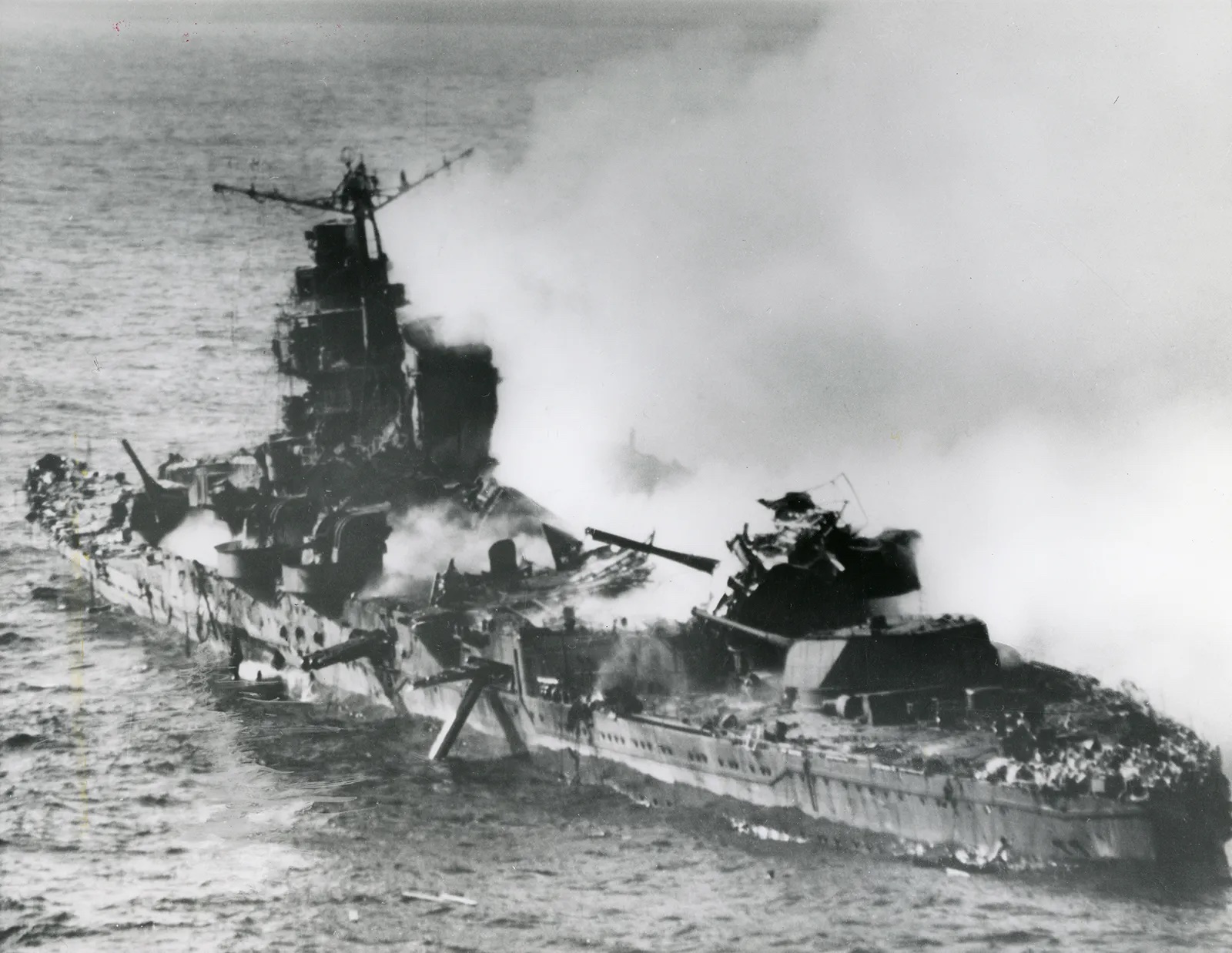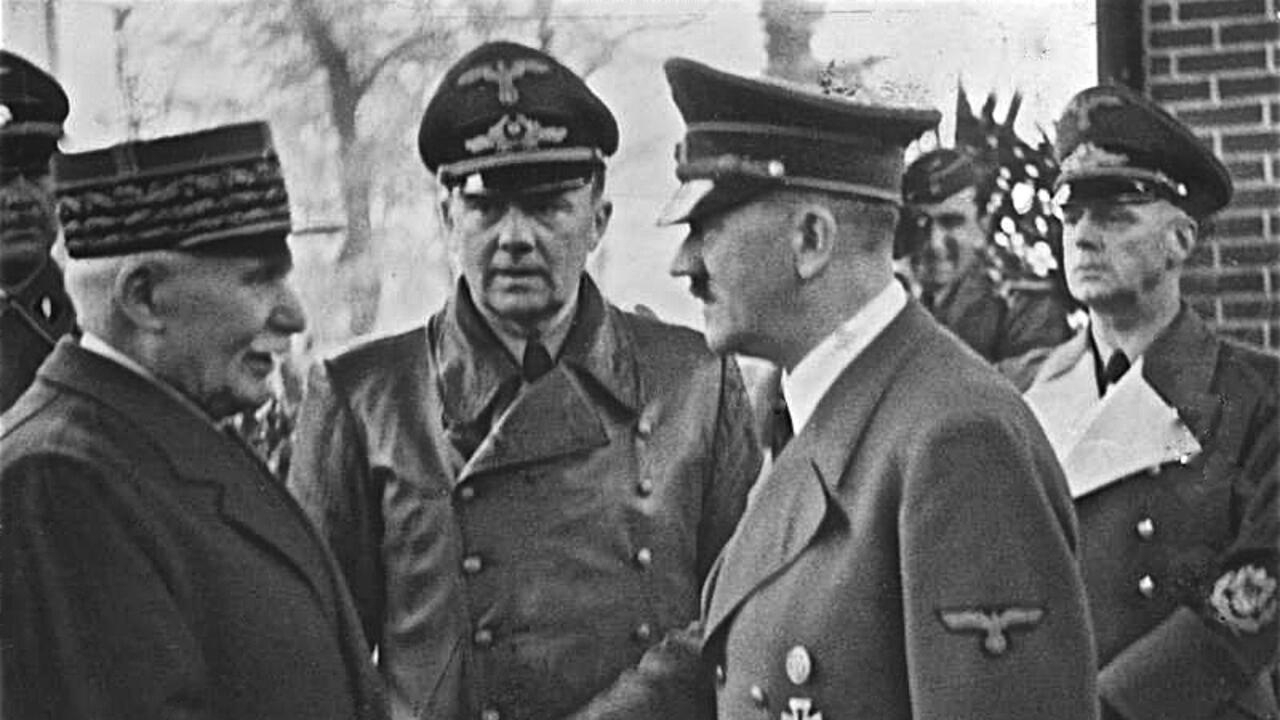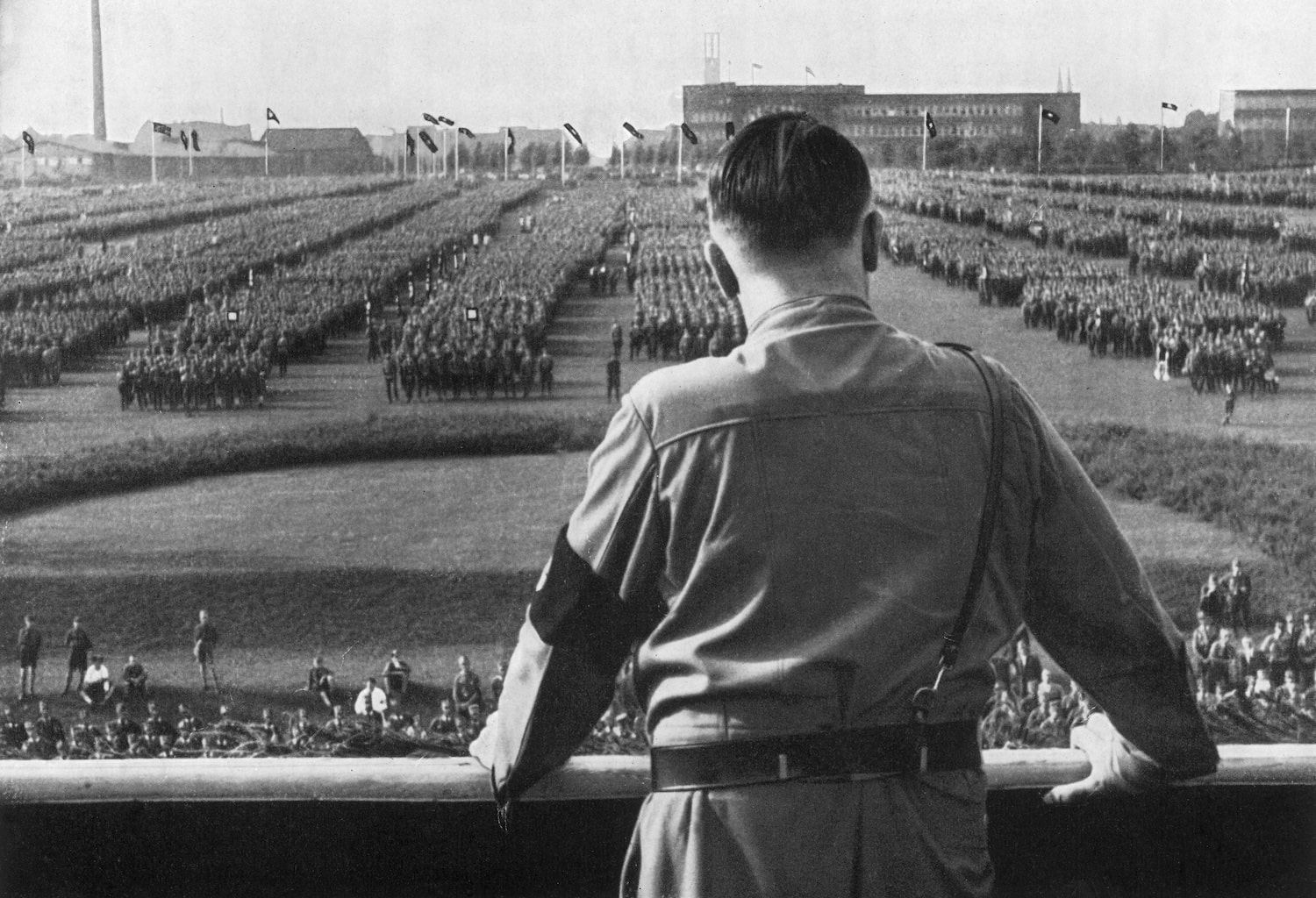The United States achieved naval air superiority over Japan in the Pacific Ocean following the decisive Battle of Midway during World War II. The fighting occurred in the waters off the Midway Islands, to the northwest of the Hawaiian Islands, from June 3-7, 1942. The Japanese plan to encircle this atoll with an underwater barrage was thwarted by the American military, who achieved a major victory. This effectively ended any further maritime expansion by the imperial army, as the United States military effectively cut off their supply lines. As much as the Allied victory on the Russian front or in North Africa, the sinking of four aircraft carriers, three destroyers, and two hundred and sixty-one fighter planes at Midway shifted the balance of power in the war.
The Midway trap
After five months of defeats since Pearl Harbor, the Americans’ luck appeared to be changing with the paradoxical victory at the Battle of the Coral Sea in May 1942. Admiral Yamamoto, however, had not finished speaking, and he planned to trap the enemy carriers. Despite the setback at the Coral Sea for the operation against Australia and New Guinea, Admiral Yamamoto decided to maintain the initiative by preparing a new offensive. Although the primary goal was relatively unimportant, it was actually meant to lure the enemy fleet so that it could be destroyed.
Actually, Yamamoto had his sights set on Midway, a Pacific atoll that was far from everything and of little strategic interest, but a landing there would still force the Americans to react. The Japanese admiral expected the American fleet to be depleted since Pearl Harbor, but he also anticipated that after the loss of the Lexington in the Coral Sea, the United States would be compelled to commit its last remaining forces to this battle.
It was also decided to launch a parallel attack on the Aleutian Islands; if the goal was to confuse the Americans, this also had the disadvantage of complicating the Japanese plan and even dividing the forces for no real reason. This strategic flaw would prove to be a recurring theme for the Japanese throughout the war.
The American surprises
As a whole, the American fleet’s experience at the Battle of the Coral Sea was mixed. While they were successful in stopping the Japanese offensive on Australia, they also suffered heavy losses, including the destruction of the aircraft carrier Lexington and the severe damage sustained by the battleship Yorktown.
The intelligence services had made great strides since Pearl Harbor, and it appeared that they had identified the next enemy target by breaking the Japanese code: Midway. This was the first good news Admiral Nimitz received. While it may have appeared that the Yorktown (commanded by Fletcher) was in dry dock for weeks, its repairs were actually completed in record time thanks to Chester Nimitz’s orders to bring the carrier to Pearl Harbor.
The aircraft carriers Enterprise and Hornet (commanded by Spruance) should be able to get to the area quickly, so the Admiral had that going for him as well. The Japanese did not realize that the forces were even.
Beginnings of the Midway conflict
The Japanese were so intent on carrying out their complex plan that they failed to anticipate facing not one, not two, but three aircraft carriers; they had been led to believe that the Yorktown had been sunk in the Coral Sea. Worse, they had to make do without the Shokaku and the Zuikaku, both of which were damaged in this conflict. Consequently, Yamamoto “only” had four aircraft carriers—the Kaga, the Hiryu, the Akagi, and the Soryu—for the Midway attack. One thing to keep in mind was that they were all there when Pearl Harbor was bombed.
The majority of the Japanese fleet set sail for Midway and the Aleutians on May 26, 1941. They left Pearl Harbor the following day without the enemy knowing it, and the Japanese command thought the Enterprise and the Hornet were still operating in the Solomon Islands. The U.S. had won the intelligence war long ago.
On June 3, much to the shock of the Japanese, who had assumed they would not be attacked, the first contact was made when B-25s from Midway began bombing their island. The only thing that really got damaged was the Japanese pride after it became clear that the Americans hadn’t fallen for the Aleutian trap.
Raid on Midway and reconnaissance
Even so, Yamamoto continued to launch his assault. When he gave the order to invade the atoll on June 4, 1942, Nagumo was ready. The first attack ended at 7:10 a.m., and the Japanese pilots promptly requested another one. While passing through Midway, they ran into the American air force, which launched an unsuccessful attack on the Japanese fleet. The atoll-based air force did not cease to exist until 9 a.m. However, their efforts were not in vain, as the Japanese had already spotted the American fleet by the time the Midway raid took place, but were unable to attack it due to the destruction of their aircraft.
The reconnaissance ballet had been going on for hours. Disturbing and sometimes muddled messages were sent to Admiral Nagumo, one of which mentioned an American aircraft carrier being nearby. In the end, he decided to wait until the Midway raids were over before launching an attack, despite his initial reluctance. The Japanese mechanics were so confused that they had to switch the plane’s ammunition twice; once from torpedoes to bombs and once back again. A technical issue arose and all four Japanese aircraft carriers were in complete disarray. What the Japanese feared most came true: the Americans had also spotted them.
The American Box
An American reconnaissance plane spotted the Japanese fleet at 5 a.m., hours before the Japanese had signaled Fletcher’s aircraft carrier, the Yorktown. After two hours of the Midway raid, Enterprise’s planes were the first to make contact with the Japanese fleet, but the old Devastator torpedo boats had little effect and were shot down like rabbits by Japanese flak. Though flawed, they accomplished their goal of clearing the skies of enemy fighters for the subsequent aircraft, most notably the Dauntless dive bombers.
The Nagumo fleet was then hit by a barrage of bombs. Within minutes, the Kaga, the Akagi, and the Soryu were all either sunk or rendered inoperable. Not helping matters were the planes waiting on the decks to convert their bombs into torpedoes. After the twenty-minute American raid, the Japanese fleet had only the aircraft carrier Hiryu to launch planes.
Farewell to Yorktown
At 10:40 a.m., aircraft from the Hiryu began their assault. The Yorktown, an aircraft carrier spotted early in the day, was their intended prey. Three bombs severely damaged the hero of the Battle of the Coral Sea, followed by a second wave, this time with two torpedoes. All hope was lost when the aircraft carrier was finally destroyed by a submarine two days later. The submarine also managed to sink the destroyer that had been protecting the carrier. Meanwhile, the aircraft launched a new attack on Nagumo’s fleet and sank the Hiryu; the vengeance for the Yorktown continued with a two-day pursuit of the heavy cruisers Mikuma and Mogami, the first of which was ultimately sunk, and the second of which was very seriously damaged.
As a result of arriving late to the scene, Admiral Yamamoto missed his chance to save Nagumo. He issued a retreat order. It was a devastating setback.
Results and implications of the Midway conflict
Unlike in the Coral Sea conflict, there was no ambiguity about the outcome this time! Whereas the Americans only abandoned one, the Japanese abandoned four. And most importantly, the war would ultimately come down to the loss of far too many of the Japanese fleet’s most experienced pilots.
Admiral Yamamoto’s attempt to capture Midway was a strategic failure, and he lost the initiative as a result. From Midway on, the Japanese advance was stopped for good, and more importantly, the Americans were able to launch a counterattack, which they did on Guadalcanal. As with the Allied victories on the Russian front and in North Africa, this was a turning point in the Pacific War.
Ultimately, the outcome of this naval engagement proved once and for all that aircraft carriers are superior to battleships. The ultimate defeat of the two titans, Musashi and Yamato, later in the war served as a symbolic confirmation of this. However, we still have a ways to go.
TIMELINE OF THE BATTLE OF MIDWAY
December 7, 1941: Attack on Pearl Harbor
At 7:55 a.m., Japanese air forces launched an attack on the Pearl Harbor naval base. Over 2,000 Americans and roughly 100 Japanese were killed in the conflict. The Japanese Empire sought to destroy all U.S. naval and air vessels. They wanted to solidify their dominance in the Pacific by launching campaigns in Australia and Malaysia.
December 8, 1941: The United States declared war on Japan
After the Japanese attack on Pearl Harbor, the United States ends its state of neutrality. Involvement in World War II and the Pacific War begins with a declaration of war against the Empire of Japan.
May 4, 1942: Battle of the Coral Sea
The United States and Japan fought each other off the coast of Australia in the Coral Sea. The dates of May 4–May 8 of 1942 were crucial to this conflict. In spite of being the first naval air battle ever recorded, the outcome was a draw. The United States claimed a strategic victory, while the Japanese Empire won on the ground. The resolution of this conflict was exploited by both parties.
June 7, 1942: American victory in the Battle of Midway
The United States won the Battle of Midway on the fourth day of fighting. Air strikes on both sides’ naval fleets were a defining feature of this conflict. Both the strategic mistakes of the Japanese empire and the deciphering of their communications helped the Allies win the war. Japan will no longer be the one to initiate attacks during the Pacific War.
August 7, 1942: Marines land at Guadalcanal
The Solomon Islands campaign officially kicked off with the landing on Guadalcanal. The Allies were able to retake the strategic position from the Japanese in just six months. During this assault, 3,100 Americans and 31,000 Japanese were killed. Hundreds of airplanes and ships were lost on both sides.
Bibliography:
- Morison, Samuel E. (1949). Coral Sea, Midway and Submarine Actions: May 1942 – August 1942. History of United States Naval Operations in World War II. Vol. 4. Boston: Little, Brown. ISBN 978-0-316-58304-6.
- Isom, Dallas Woodbury (2007). Midway Inquest: Why the Japanese Lost the Battle of Midway. Bloomington, Indiana: Indiana University Press. ISBN 978-0-253-34904-0.
- Lord, Walter (1967). Incredible Victory. New York: Harper and Row. ISBN 1-58080-059-9.
- Buell, Thomas B. (1987). The Quiet Warrior: A Biography of Admiral Raymond A. Spruance. Annapolis, Maryland: Naval Institute Press. ISBN 0-87021-562-0.
- Symonds, Craig L. (2018). World War Two at Sea: A Global History. Oxford University Press. ISBN 978-0-1902-4367-8.






